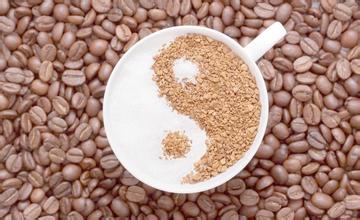Fragrant and delicious Nicaraguan Coffee Manor flavor and taste characteristics of lemon tree manor
Columbus sailed here in 1502 and reached the east coast of Nicaragua. In 1522, Spanish colonists began conquering the area. In 1524 the cities of Granada and Leon were founded. From then on, Nicaragua became a Spanish colony and was placed under the jurisdiction of the Governor General of Guatemala. León became a political and cultural centre; Granada became a commercial and agricultural centre. In the later period of colonial rule, the large manor economy developed to a certain extent, and beef, cocoa and indigo became the main products. It became a Spanish colony in 1525. In the mid-17th century, the British occupied the Mosquito coast and declared it a British protectorate until the London Agreement with Spain was signed in 1786. [3]
declared independence
On September 15, 1821, Nicaragua cast off the Spanish colonial yoke and declared independence. He briefly joined the Mexican Empire in 1822 - 1823. Joined the Central American Federation from 1823 to 1838. [3]
Jianguo
In 1839, Nicaragua was established as a republic. In 1912, the United States established a military base in Nicaragua. [3]
war
From July 1927, Augusto. Cesar Sandinista led a guerrilla war against the American occupation, forcing the withdrawal of American troops in 1933. February 21, 1934 Nicaragua National Guard Commander Anastasio. Somoza. Garcia assassinated Sandino at the behest of President Roosevelt. He took office in 1936 and established a pro-American family "Cordillo"-style dictatorship for more than 40 years until 1979. In 1964, the Sandinista National Liberation Front (FNL) was established and began its revolutionary struggle against the Somoza dictatorship. Nicaragua is now one of the poorest countries in Central America. Due to its poor economic foundation, the coffee industry is still in a relatively backward state, and coffee farmers are in an extremely poor state. Fortunately, Nicaragua's coffee has received some foreign aid funds to improve the quality of its coffee. Nicaragua's Madagelba, Chinodega, Segovia region of coffee produced by coffee lovers respected the world. In particular, coffee grown in the Madagerba region tastes very similar to Kenyan AA coffee.
When tasting Nicaragua coffee, it is best to drink a mouthful of cold water first, so that you can better feel its mellow taste. Drink coffee while it is hot, because tannic acid in Nicaragua coffee is easy to change in the process of cooling, which makes the taste sour and affects the flavor of coffee. You can add sugar and then creamer. Enjoy a cup of high-quality Nicaragua coffee, not only can you experience the different levels of coffee taste, but will also help improve the ability to appreciate coffee.
Coffee is Nicaragua's main export product. Nicaragua's total coffee production for the 1998/99 coffee year could be 12 per cent lower than in 1997/98 due to the poor harvest in the Pacific region, according to the president of the Nicaraguan Coffee Farmers Federation. Nicaragua harvested a total of 1.422 million bags (46kg/bag) of coffee in the 1997/98 coffee year, the best harvest since coffee production hovered around 1 million bags for 14 years. Coffee exports are expected to be around 1.5 billion U.S. dollars in 1998. $600 million, Nicaragua coffee production will drop sharply @ Vechele coffee is Nicaragua's main export product. nicaragua's total coffee production for the 1998/99 coffee season may be 12 percent lower than in 1997/98 because of the poor harvest in the pacific region, according to the president of the Nicaragua coffee farmers federation

Important Notice :
前街咖啡 FrontStreet Coffee has moved to new addredd:
FrontStreet Coffee Address: 315,Donghua East Road,GuangZhou
Tel:020 38364473
- Prev

Introduction to the flavor and taste of Panamanian Coffee Manor
The American Fine Coffee Association (SCAA) ranked No. 1 in the World Coffee Cup Test in 2005, 2006 and 2007, while the Tropical Rain Forest Conservation Group ranked No. 1 in 2004, 2006 and 2007. Panama Coffee is grown in the western part of the country, near Costa Rica and the Pacific Ocean. Bockett, Chiriki Chiriqui province (
- Next

Papua New Guinea Coffee Estate Flavor Taste Introduction Bird of Paradise Estate
Papua New Guinea is the second largest country in the South Pacific after Australia in terms of population and area. It consists of New Guinea in the north and Papua in the south. It borders Irian Jaya province in Indonesia to the west and Australia across the Torres Strait to the south. It belongs to the Melanesian Islands. Papua New Guinea covers an area of 462,840 square kilometers and has a complete coastline.
Related
- Does Rose Summer choose Blue, Green or Red? Detailed explanation of Rose Summer Coffee plots and Classification in Panamanian Jade Manor
- What is the difference between the origin, producing area, processing plant, cooperative and manor of coffee beans?
- How fine does the espresso powder fit? how to grind the espresso?
- Sca coffee roasting degree color card coffee roasting degree 8 roasting color values what do you mean?
- The practice of lattes: how to make lattes at home
- Introduction to Indonesian Fine Coffee beans-- Java Coffee producing area of Indonesian Arabica Coffee
- How much will the flavor of light and medium roasted rose summer be expressed? What baking level is rose summer suitable for?
- Introduction to the characteristics of washing, sun-drying or wet-planing coffee commonly used in Mantenin, Indonesia
- Price characteristics of Arabica Coffee Bean Starbucks introduction to Manning Coffee Bean Taste producing area Variety Manor
- What is the authentic Yega flavor? What are the flavor characteristics of the really excellent Yejasuffi coffee beans?

